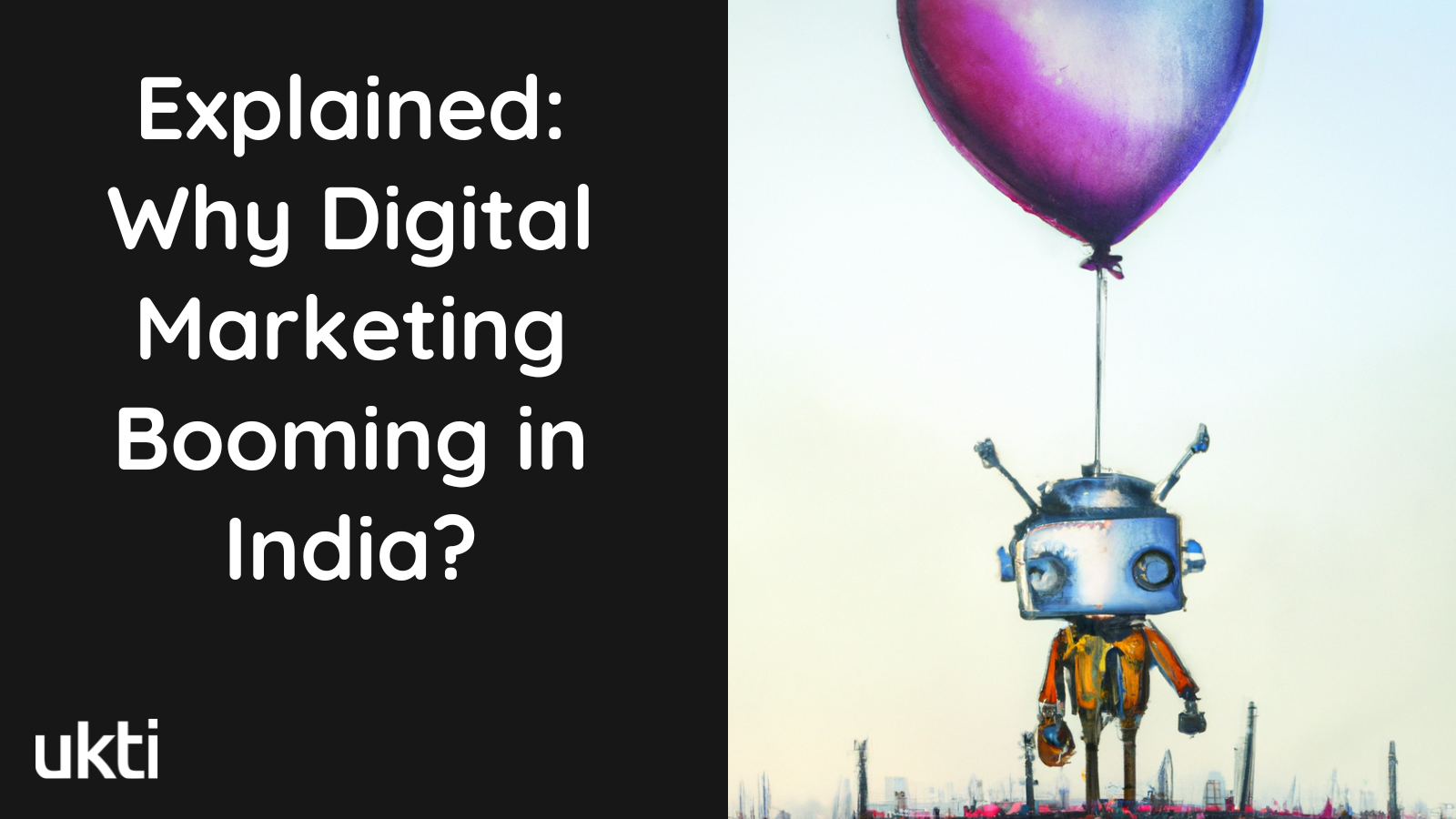Can you name an Indian brand that doesn’t have a digital marketing strategy? Neither can we. Here is what led to the digital boom in India.
In 2016, Indians awoke to this shocking headline:
“Maggi Noodles Banned in India's Capital for High Lead Content”
When the news broke, analysts quickly predicted that it would be difficult for Maggi to rebuild the trust. But little did they know, Maggi had other plans.
During its 5-month ban, Nestle relied on social media including Facebook and Twitter to reassure customers that its product was safe. They also tried responding to each & every comment on social media directly and created a section on their main website to share customer updates consistently.
Later, when the ban was lifted, Maggi went blazing all its guns and released digital marketing campaigns. Two of them were #WeMissYouToo and #DilKiDeal.
In the former campaign, Maggi asked people to share their stories on various social media platforms, making them brand ambassadors. The hashtag caught fire and became trending on Twitter with over 4.5K tweets.

Maggi wasn’t done here!
It took one step further and joined with Snapdeal and asked them to sell their Maggi kit, which they named “DilKiDeal.” Within 5 minutes, 60,000 units were sold on Snapdeal. And within 10 days, it sold over 3.3 crore units of Maggi. And soon enough, “DilKiDealWithMaggi” started trending on Twitter.
If Nestle wanted, they could’ve followed the traditional path of only TV ads, but they didn’t.
Why?
Here’s what Nestlé’s MD of India, Suresh Narayanan, said,
“Digital and social media is central to our brand-building process. We believe that big things happen for brands when these two are in synergy. For us, the concept is not just digital media, but of competing in a digitally-connected age.”
Maggi lost 500 crores during its ban, but leveraging digital marketing, it bounced back and regained its 57% market share in July 2016. It is one of many examples of how effective digital marketing has been and continues to be in India.
A Brief History of Digital Marketing in India
The credit for launching the Internet Service for digital marketing in India is often given to Videsh Sanchar Nigam Limited, also known as VSNL.
Soon after, the Indian business community began exploring the potential of Internet marketing in India in 1996, which led to the launch of the IndiaMart and the beginning of digital marketing in India. It was the first company to launch e-commerce in India.
But it wasn’t until 2007 that ecommerce took off in India. Pioneering ecommerce for B2C, Flipkart emerged on the scene with a wide range of products at the most competitive prices and hassle-free ordering with secure payment methods. This was unheard of at the time.

While the expectations piled up, Flipkart’s growth did not meet the expectations of the government. And so, in 2010, the government launched plans to revitalise broadband connectivity. As a result, the number of internet users in India increased to 28% in 2012 and 39% in 2013.
Since then, India has been on the path of exponential growth in digital marketing and continues to do so.
Many brands like RedBus, Zomato, OYO, Ola, Myntra, and Nykaa have changed the digital marketing landscape in India.
Why is Digital Market Booming in India?
Traditionally, word-of-mouth advertising and door-to-door sales were the only forms of marketing. With time, marketing has become more digital, as people seek instant access to everything.
Let’s explore a few reasons behind the growth of the digital marketing industry in India.
#1 Increase in the Number of Active Internet Users
Since the global pandemic, digital adoption has been on a steady incline. Internet has reached to the remotest towns in the country.
The ‘ICUBE 2020’ report by IAMAI and Kantar revealed:
“While internet users grew by 4% in urban India reaching 323 million users in 2020, digital adoption continues to be propelled by rural India – registering a 13% growth in internet users over the past year.”
And the number is growing year by year.
Today, India has an enormous market of over a billion people, of which 600 million are under the age of 20, contributing to the country’s high consumption power.
Globally too, the number of people using the Internet is rising steadily.
In India alone, there are currently 692 million active internet users. The penetration rate in India increased from just 4% in 2007 to more than 47% in 2021. According to the report, India will have 900 million internet users by 2025.
As more and more people get access to Internet, the number of active users is going up. Whether it’s OTT services, online gaming, ecommerce, budget-friendly smartphones or more, there is no going back.

The positive and ongoing growth of internet users creates ample opportunities for businesses of all size. This is opening doors for many digital marketing jobs in the country.
2. Digital Marketing is Bringing Higher ROI Than Traditional Marketing
“If you cannot find something online, does it even exist?”
In today’s business landscape, going digital is not a strategic move for a company, but a necessary one if it wants to avoid extinction.
Sulekha, a platform connecting consumers and service providers, is a brilliant example of going digital-first.
At a time when people were sifting through Yellow Pages to find plumbers, tutors, mechanics and other service providers, Sulekha was offering a convenient way of searching them online. Started in 2007, it has become an end-to-end local service fulfilment brand today.
If a business doesn’t have a presence online, they will lose customers to businesses who do, as most customers are looking for a product/service online. This is why digital marketing has become non-negotiable.
It isn’t solely about selling a product or service anymore, but about creating exciting content that will attract the attention of their audiences. And so, over the coming years, digital channels will become the only channels to interact with customers and build a resilient brand.
In comparison to traditional channels like print and TV, digital channels are also bringing in better revenue at lesser costs. This is another reason why digital marketing is taking off in India.

3. Indian Government’s Push for Digital Adoption
Since the introduction of Digital India in 2015 – a project to advance online infrastructure and digital empowerment – a vast market of startups, services, and more connected people worldwide has exploded.
As per a McKinsey report, the “Digital India” initiative is anticipated to increase the nation’s digital economy from US$ 200 billion in 2018 to US$ 1 trillion by 2025. And the reasons are clear as day.
With smartphones available at competitive prices and cheap data plans offering increased bandwidth, the prevalence of small businesses in rural areas is rising.
As a result of these initiatives, people in rural areas have launched their online businesses, primarily selling handmade products. Many have turned to social media platforms like WhatsApp, YouTube, and Facebook to market their services and products. This penetration has added to the booming digital economy.
But since the pandemic, digital adoption has only increased leaps and bounds especially with the small sized businesses.
Today, a significant portion of rural India has become digitally connected, giving people more freedom to communicate and conduct business online. This resulted in the creation of millions of new customers for e-commerce and digital marketing.

4. The Boom of Digital Influencers
In your Instagram feed, you must’ve noticed that some promotional posts come with a ‘Paid promotion’ tag, or the person is simply promoting products. Nevertheless, both instances involve influencer marketing.
During the pandemic, we’ve seen an increase in the number of influencers on various social media platforms, particularly Instagram.
Every influencer’s audience differs, allowing businesses to target various population segments. Celebrities are primary influencers, but micro-influencers follow closely behind them. Surprisingly, consumers are 30% more likely to buy a product recommended by a micro-influencer than one promoted by celebrities.
While some influencers rely on storytelling to explain goods and services, others might use statistics and facts. 90% of marketers said that influencer marketing has a higher ROI than other marketing avenues.
Many influencer-led campaigns received high consumer engagement and adoption levels, giving the brands a new lease on life.
Companies that are doing influencer marketing right
One such company, Mamaearth, has greatly benefited from such communication by utilising it to its advantage. To spread the word on digital platforms, Mamaearth collaborated with 500 mom bloggers. These influencers post about the products of Mamaearth and their goodness and promote the brand.
Various Indian brands like Vogue India, Amul, and even Unacademy have leveraged content marketing and storytelling to market their product.
Unacademy went a step further with their content game by releasing a popular YouTube series, Kota Factory, about young boys who go to Kota to study for one of the toughest tests in India.
The show’s first episode, which garnered 59M views, clearly demonstrates that it struck a chord with the young generation since its debut.
From when Kota Factory was released, Unacademy caught up to Byju’s search volume. Content marketing significantly increased brand recall and created awareness of Unacademy’s value proposition, eventually increasing subscriptions for Unacademy and creating a positive aura around the category that attracts new users to the brand.
The Future of Digital Marketing
Since traditional marketing is challenging to achieve, companies are shifting to digital marketing. No wonder in the years to come, almost 90% of business houses will rely on digital marketing.
The digital marketing industry is worth $68 billion and growing at a 40% rate. With the increase in internet users and organisations adopting digital marketing, job roles and options will only advance.
With over 900 million internet users, India was the second largest online market in the world, behind China. By 2025, India will have close to 974.86 million internet users. The sector is experiencing double-digit growth in the country, so it’s safe to say that digital marketing has a bright future.
As a final word, here’s a quote from Garyvee’s book, “Jab, Jab, Jab, Right Hook!”
“Brand storytelling is not about pushing advertising; it’s about bringing value.”
And India is getting its due.

